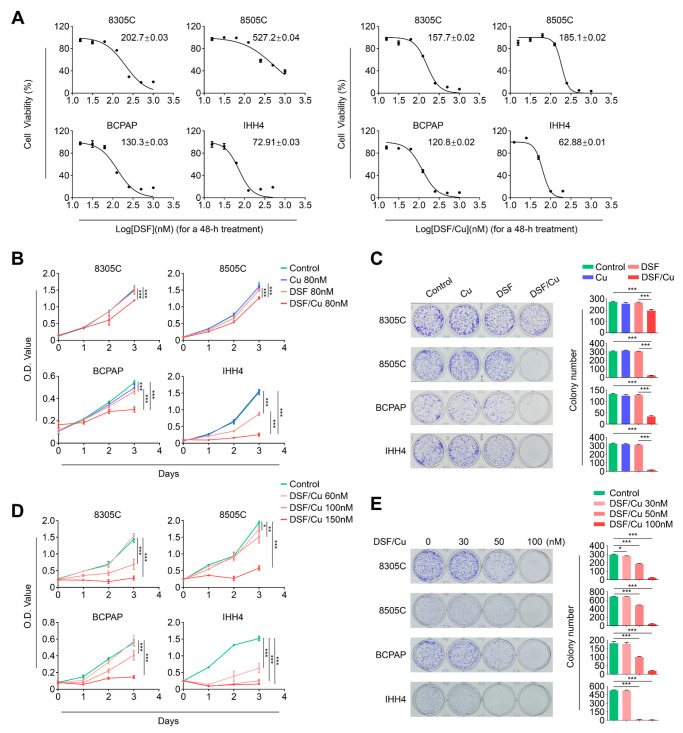Figure 1.
Copper (Cu) enhances the antitumor activity of disulfiram in BRAFV600E-mutated thyroid cancer cells. (A) BRAFV600E-mutated thyroid cancer cell lines 8305C, 8505C, BCPAP and IHH4 were treated with different concentrations of DSF or DSF/Cu (at 1:1 molar ratio) for 48 h. Cell viability was evaluated by MTT assay, and half-maximal inhibitory concentration (IC50) values were then calculated using the Reed–Muench method. (B) The above cells were treated with 80 nM DSF and 80 nM CuCl2, individually or in combination, for the indicated times. MTT assay was then performed to assess the proliferation of these cells. (C) Cells were treated with the indicated concentrations of DSF and CuCl2, individually or in combination (8305C: 80 nM DSF and/or 80 nM CuCl2; 8505C: 120 nM DSF and/or 120 nM CuCl2; BCPAP: 100 nM DSF and/or 100 nM CuCl2; IHH4: 50 nM DSF and/or 50 nM CuCl2) for 9 days, and then stained with crystal violet. The left panels show the representative images of colony formation. Quantitative analysis of colony numbers are presented in the right panels. (D) Cells were treated with different doses of DSF/Cu for the indicated times. MTT assay was then performed to evaluate their effects on cell viability. (E) Colony formation assay was performed when these cells were treated with DSF/Cu in dose-dependent manner for 9 days (left panels). Quantitative analysis of colony numbers is presented in the right panels. Data presented as means ± SD. * p < 0.05; ** p < 0.01; *** p < 0.001.

